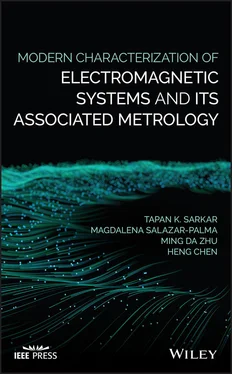561 548
562 549
563 550
564 551
565 552
566 553
567 554
568 555
569 556
570 557
571 558
572 559
573 560
574 561
575 562
576 563
577 564
578 565
579 566
580 567
581 568
582 569
583 570
584 571
585 573
586 574
587 575
588 576
589 577
590 578
591 579
592 580
593 581
594 582
595 583
596 584
597 585
598 586
599 587
600 588
601 589
602 590
603 591
604 592
605 593
606 594
607 595
608 596
609 597
610 598
611 599
612 600
613 601
614 602
615 603
616 604
617 605
618 606
619 607
620 608
621 609
622 610
623 611
624 612
625 613
626 614
627 615
628 616
629 617
630 618
631 619
632 620
633 621
634 622
635 623
636 624
637 625
638 626
639 627
640 628
641 629
642 630
643 631
644 632
645 633
646 634
647 635
648 636
649 637
650 638
651 639
652 640
653 641
654 642
655 643
656 644
657 645
658 646
659 647
660 648
661 649
662 650
663 651
664 652
665 653
666 654
667 655
668 656
669 657
670 658
671 659
672 660
673 661
674 662
675 663
676 664
677 665
678 666
679 667
680 668
681 669
682 670
683 671
684 672
685 673
686 674
687 675
688 676
689 677
690 678
691 679
692 680
693 681
694 682
695 683
696 684
697 685
698 686
699 687
700 688
701 689
702 690
703 691
704 692
705 693
Modern Characterization of Electromagnetic Systems and Its Associated Metrology
Tapan K. Sarkar†
Syracuse University 11 Wexford Road, Syracuse, New York 13214
Magdalena Salazar‐Palma
Carlos III University of MadridAvda. de la Universidad 30, 28911 Leganés, Madrid, Spain
Ming Da Zhu
Xidian UniversityNo. 2 South Taibai Road, Xi’an, Shaanxi, China
Heng Chen
Syracuse University211 Lafayette Rd. Room 425, Syracuse, NY, USA

This edition first published 2021
© 2021 John Wiley & Sons, Inc.
All rights reserved. No part of this publication may be reproduced, stored in a retrieval system, or transmitted, in any form or by any means, electronic, mechanical, photocopying, recording or otherwise, except as permitted by law. Advice on how to obtain permission to reuse material from this title is available at http://www.wiley.com/go/permissions.
The right of Tapan K. Sarkar, Magdalena Salazar‐Palma, Ming Da Zhu, Heng Chen to be identified as the authors of the editorial material in this work has been asserted in accordance with law.
Registered Office John Wiley & Sons, Inc., 111 River Street, Hoboken, NJ 07030, USA
Editorial Office 111 River Street, Hoboken, NJ 07030, USA
For details of our global editorial offices, customer services, and more information about Wiley products visit us at www.wiley.com.
Wiley also publishes its books in a variety of electronic formats and by print‐on‐demand. Some content that appears in standard print versions of this book may not be available in other formats.
Limit of Liability/Disclaimer of Warranty MATLAB ®is a trademark of The MathWorks, Inc. and is used with permission. The MathWorks does not warrant the accuracy of the text or exercises in this book. This work's use or discussion of MATLAB ®software or related products does not constitute endorsement or sponsorship by The MathWorks of a particular pedagogical approach or particular use of the MATLAB ®software. While the publisher and authors have used their best efforts in preparing this work, they make no representations or warranties with respect to the accuracy or completeness of the contents of this work and specifically disclaim all warranties, including without limitation any implied warranties of merchantability or fitness for a particular purpose. No warranty may be created or extended by sales representatives, written sales materials or promotional statements for this work. The fact that an organization, website, or product is referred to in this work as a citation and/or potential source of further information does not mean that the publisher and authors endorse the information or services the organization, website, or product may provide or recommendations it may make. This work is sold with the understanding that the publisher is not engaged in rendering professional services. The advice and strategies contained herein may not be suitable for your situation. You should consult with a specialist where appropriate. Further, readers should be aware that websites listed in this work may have changed or disappeared between when this work was written and when it is read. Neither the publisher nor authors shall be liable for any loss of profit or any other commercial damages, including but not limited to special, incidental, consequential, or other damages.
Library of Congress Cataloging‐in‐Publication Data
Names: Sarkar, Tapan (Tapan K.), editor. | Salazar-Palma, Magdalena, editor. | Zhu, Ming Da, editor. | Chen, Heng, editor.
Title: Modern characterization of electromagnetic systems and its associated metrology / edited by Tapan K. Sarkar, Magdalena Salazar-Palma, Ming Da Zhu, Heng Chen.
Description: Hoboken, NJ : Wiley, 2020. | Includes bibliographical references and index.
Identifiers: LCCN 2020008264 (print) | LCCN 2020008265 (ebook) | ISBN 9781119076469 (hardback) | ISBN 9781119076544 (adobe pdf) | ISBN 9781119076537 (epub)
Subjects: LCSH: Electromagnetism–Mathematics. | Electromagnetic waves–Measurement.
Classification: LCC QC760 .M53 2020 (print) | LCC QC760 (ebook) | DDC 537/.12–dc23
LC record available at https://lccn.loc.gov/2020008264LC ebook record available at https://lccn.loc.gov/2020008265
Cover Design: Wiley
Cover Image: © zf L/Getty Images
The area of electromagnetics is an evolutionary one. In the earlier days the analysis in this area was limited to 11 separable coordinate systems for the solution of Helmholtz equations. The eleven coordinate systems are rectangular, circular cylinder, elliptic cylinder, parabolic cylinder, spherical, conical, parabolic, prolate spheroidal, oblate spheroidal, ellipsoidal and paraboloidal coordinates. However, Laplace’s equation is separable in 13 coordinate systems, the additional two being the bispherical and the toroidal coordinate systems. Outside these coordinate systems it was not possible to develop a solution for electromagnetic problems in the earlier days. However, with the advent of numerical methods this situation changed and it was possible to solve real practical problems in any system. This development took place in two distinct stages and was primarily addressed by Prof. Roger F. Harrington. In the first phase he proposed to develop the solution of an electromagnetic field problem in terms of unknown currents, both electric and magnetic and not fields by placing some equivalent currents to represent the actual sources so that these currents produce exactly the same desired fields in each region. From these currents he computed the electric and the magnetic vector potentials in any coordinate system. In the integral representation of the potentials in terms of the unknown currents, the free space Green’s function was used which simplified the formulation considerably as no complicated form of the Green’s function for any complicated environment was necessary. From the potentials, the fields, both electric and magnetic, were developed by invoking the Maxwell‐Hertz‐Heaviside equations. This made the mathematical analysis quite analytic and simplified many of the complexities related to the complicated Green’s theorem. This was the main theme in his book “Time Harmonic Electromagnetic Fields”, McGraw Hill, 1961. At the end of this book he tried to develop a variational form for all these concepts so that a numerical technique can be applied and one can solve any electromagnetic boundary value problem of interest. This theme was further developed in the second stage through his second classic book “Field Computations by Moment Methods”, Macmillan Company, 1968. In the second book he illustrated how to solve a general electromagnetic field problem. This gradual development took almost half a century to mature. In the experimental realm, unfortunately, no such progress has been made. This may be partially due to decisions taken by the past leadership of the IEEE Antennas and Propagation Society (AP‐S) who first essentially disassociated measurements from their primary focus leading antenna measurement practitioners to form the Antenna Measurements Techniques Association (AMTA) as an organization different from IEEE AP‐S. And later on even the numerical techniques part was not considered in the main theme of the IEEE Antennas and Propagation Society leading to the formation of the Applied Computational Electromagnetic Society (ACES). However, in recent times these shortcomings of the past decisions of the AP‐S leadership have been addressed.
Читать дальше













